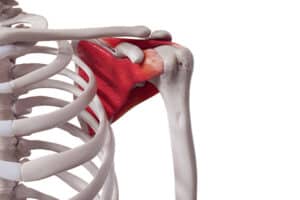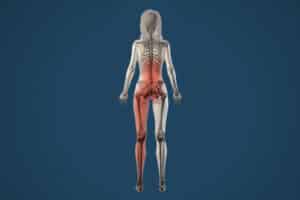Exercise Program Design Template

Overview
With a basic exercise program design template, it’s much easier to know what exercises to do. It is common knowledge that exercise can improve the function of our heart and skeletal muscles, but there are so many other reasons to get up and move, such as improving sleep and cognitive functions, helping to manage stress and anxiety, and reducing the risk of many chronic diseases. While most forms of physical activity are great, we should all be following a regular workout program that is a little more comprehensive than going for a quick walk around the block.
Why Follow an Exercise Program?
With a structured program we can set goals, increase our efficiency, evaluate our progress, and keep ourselves more accountable. Furthermore, if the program is well-designed, there is a much lower chance of creating (or furthering) muscle imbalances (eg. strong chest muscles with relatively weak upper back muscles), or neglecting things that are important, such as our core.
Basic Exercise Program Design Template
The following is a very basic exercise program design template; it will not be very useful to high-performance athletes, or even to individuals who have a moderate amount of experience with proper training. However, it is a well-balanced plan that will work well for casual or beginner gym-goers. The plan is as follows:
- Warm-up: 5-10 minutes of light activity that will elevate heart rate and prepare the muscles for the rest of the workout
- Examples:
- “Cardio” machines, such as the treadmill, stationary bike, elliptical, or stair-climber
- Dynamic stretching exercises, such as leg swing, squat to stand, knee to chest, thread the needle, open book/turn the page
- Examples:
- Core Training: 2 exercises that target the core muscles (generally speaking, the core includes the abdomen and lower back, or the area between the thorax and the pelvis)
- Examples:
- Beginner: leg slide, prone hip extension, knee side plank, knee plank
- Intermediate: plank, side plank, Pallof press, dead bug
- Advanced: plank with leg and/or arm lift, side plank and cable row, cable chop, cable lift
- Examples:
- Push: 1 exercise that targets the muscles that help with pushing movements (typically the pectorals, triceps, deltoids, etc.)
- Examples:
- Beginner: wall or knee push-up, standing cable chest press, standing cable fly
- Advanced: push-up, standing military press, bench press
- Examples:
- Pull: 1 exercise that targets the muscles that help with pulling movements (typically the biceps, latissimus dorsi, trapezius, etc.)
- Examples:
- Beginner: seated row, prone trapezius squeeze
- Advanced: kneeling lat pull-down, three-point or two-point row
- Examples:
- Hinge: 1 exercise that targets the muscles that help with movements primarily requiring bending at the hips (typically the hamstrings, gluteals, erector spinae, etc.)
- Examples:
- Beginner: bridge, hip thrust
- Advanced: Romanian deadlift, single-leg bridge, weighted hip thrust
- Examples:
- Squat: 1 exercise that targets the muscles that help with squatting or lunging movements (similar to hinge exercises, but with much greater emphasis on the quadriceps)
- Examples:
- Beginner: body squat, supported split squat
- Advanced: goblet squat, Bulgarian split squat, dumbbell forward and/or backward lunge, front squat
- Examples:
- Cool-down: 5-10 minutes of light exercises that will help with recovery and allow the heart rate to come back down
- Examples:
- Static stretching exercises, in which one or muscles are held in a lengthened position for a period of time, such as a prone quadriceps stretch or certain yoga poses. If you are experiencing neck or back tightness, you can add some additional neck stretches or low back stretches.
- Self-myofascial release, such as foam rolling or muscle release balls
- Examples:
How Frequently Should I Perform the Workout?
Once you have used the exercise program design template to create a program for your current fitness level, you should ideally be going through it at least twice, but preferably three times per week. As a new or relatively casual user of the gym, you might find that performing the workout more frequently than three times per week can be overly fatiguing. Any less than twice per week is not enough to see any significant results in a reasonable amount of time.
One way to structure the program would be to attend on Mondays, Wednesdays, and Fridays only. This gives you a day of rest between workouts, and the entire weekend to yourself.
When Should I Change the Exercises?
Once you feel that any of the exercises are becoming too easy, or that you are losing interest in them, it is likely time to exchange them for something different and more challenging. This will depend on many factors that are specific to each individual, and so there is no magic time frame for when you should be moving on to something new.
Important: If you experience pain while working out, the exercise(s) you are performing are likely too challenging and/or you are not performing them correctly. This is a good sign that you should stop and re-evaluate whether or not you need to regress to an easier exercise, or if you need to ask a professional to help you improve your form.
References
https://my.clevelandclinic.org/health/diseases/10783-metabolic-syndrome/prevention







